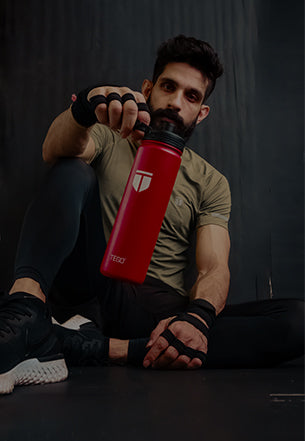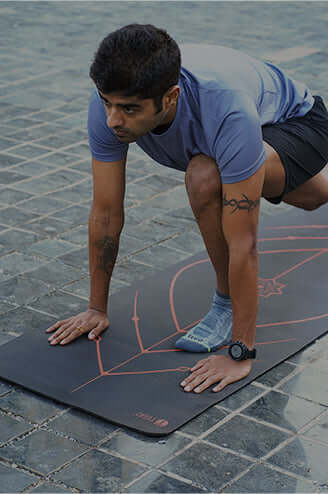You just finished watching the video. Or maybe you're hovering above the play button, wondering if 10 minutes of yoga is really going to make a difference to your strength training routine.
Spoiler: it will.
Not because yoga makes you instantly stronger, but because it teaches you how to actually use your strength.
At first glance, yoga and strength training might seem like distant cousins at a family reunion, polite smiles, minimal interaction. But Anvita Dixit, founder of Yogic Gurukul, is here to prove they’re more like long-lost best friends who just needed a proper introduction.
In the video above, Anvita takes you through a short, potent yoga flow designed to make your strength training better, not by piling on more weight or more reps, but by switching on the muscles that often sleep through your workouts.
“A big part of strength training is actually our mind-muscle connection,” she says in the video, gently reminding us that lifting heavy without awareness is like driving a sports car with the handbrake on.
This isn’t yoga as you’ve seen it on holiday postcards. This is yoga as a performance tool, teaching you to feel, engage, and control the very muscles that carry you through squats, deadlifts, and overhead presses.
Why This Flow Matters
Strength without control is chaos. And the core, your body’s command center, is often the first to get neglected when we chase bigger lifts or faster times. Anvita’s sequence focuses on reintroducing you to your core, getting you to engage it properly, and building the stability that protects your lower back and improves your overall form.
It’s the quiet work that makes the loud work possible.
Inside the Flow with Anvita
Here’s a closer look at the movements from the video, along with what they’re doing for your body and why they’re worth adding to your routine.
1. Naukasana (Boat Pose)
Anvita kicks things off by waking up the deep core muscles and hip flexors with Boat Pose. Sitting on your sit bones, legs lifted, chest open, it looks simple until you try holding it.
What it does: Strengthens your abdominal wall, builds endurance in the hip flexors, and trains you to keep a long spine under tension.
Anvita’s tip: Keep your chest open and avoid rounding your back. For extra challenge, she adds oblique twists, a deceptively tough way to target your side core muscles.
2. Bhujangasana (Snake Pose)
From the front body, Anvita moves to the back body with Snake Pose. Lying face down, she lifts through the chest while keeping the elbows close.
What it does: Strengthens the spinal erectors, opens the chest, and builds the posterior chain, all essential for balancing out front-loaded training.
Anvita’s tip: “We’re not punishing the body here, just enjoying the practice.” Focus on engagement rather than height, especially if you’re new to the pose.
3. Dhanurasana (Bow Pose)
If Snake is a warm-up for your back, Bow Pose is the main event. Anvita bends the knees, grabs the ankles, and lifts everything off the mat, creating a deep heart and hip opener.
What it does: Fires up the glutes, hamstrings, and lower back while opening tight hip flexors, crucial for anyone who spends long hours sitting or lifting.
Anvita’s tip: Grip the ankles like you would a bottle, strong but not crushing. Lift through the thighs as much as the chest.
4. Dolphin Pose
A forearm-based inversion, Dolphin Pose builds shoulder stability and deep core strength without the wrist strain of Downward Dog.
What it does: Strengthens shoulders, lats, and core while stretching the hamstrings. It also challenges your balance and body awareness.
Anvita’s tip: Walk your feet in slowly to increase the challenge, pressing your heels toward the mat inch by inch.
Not Just Flexibility, But Function
The magic isn’t just in the poses, it’s in how one cues them. You need to think about your muscles, not just your movements. She bridges that gap between exercise and activation, so you leave the mat not only looser, but stronger and more connected to your body.
Yoga in this context becomes less about flexibility and more about function, a way to keep your body performing well under load, rep after rep.
How to Use This in Your Training
This flow takes less than 15 minutes and requires nothing but a mat and a little floor space. Use it:
-
Before a workout to prime your core.
-
After a workout to rebalance and recover.
-
On rest days to keep your body in tune.
Over time, you’ll notice the difference, not just in your yoga, but in your lifts, your posture, and the way your body feels after training.
Strength training gives you horsepower. Yoga makes sure you’ve got the steering to match.
So roll out your mat, hit play, and let your core know it’s time to show up.







